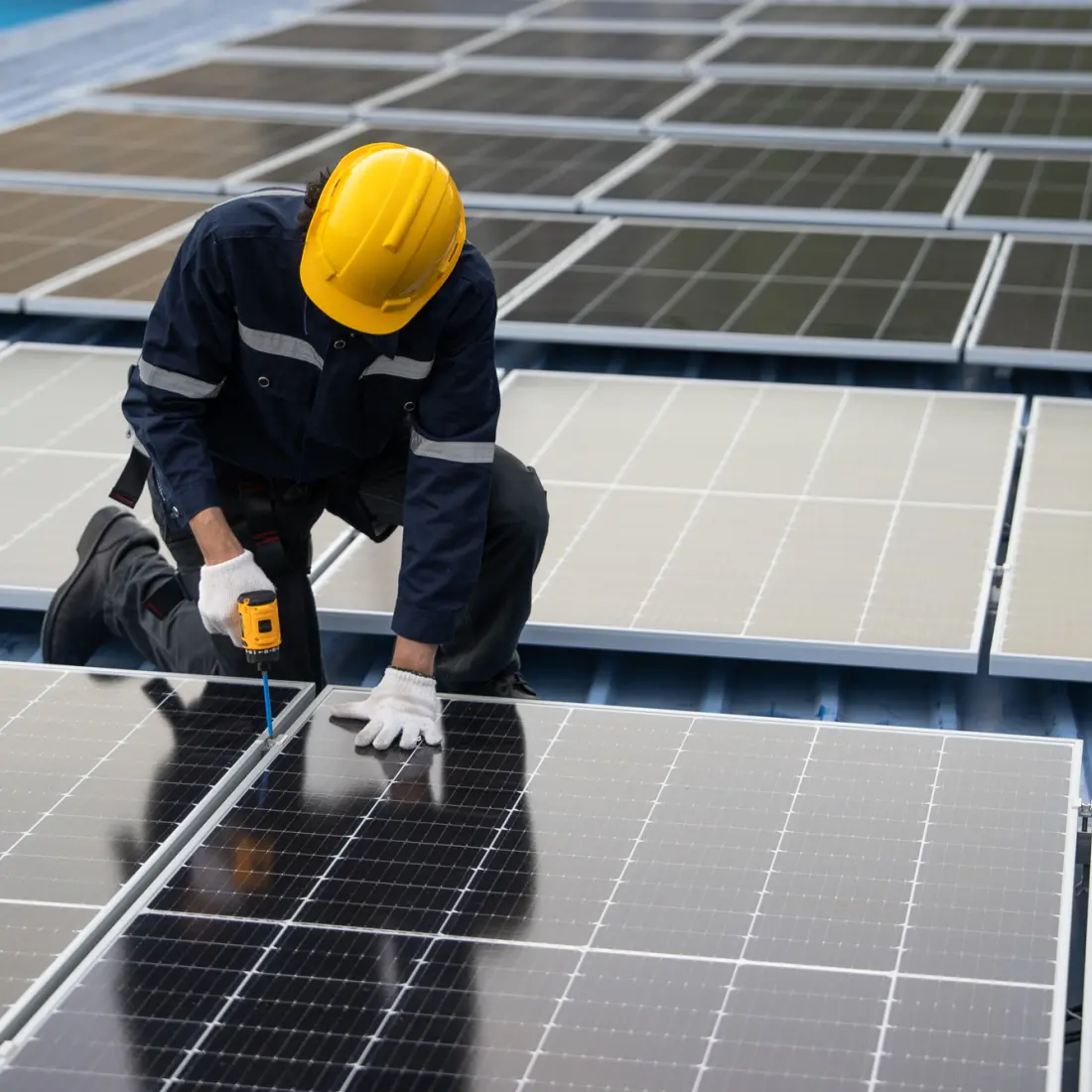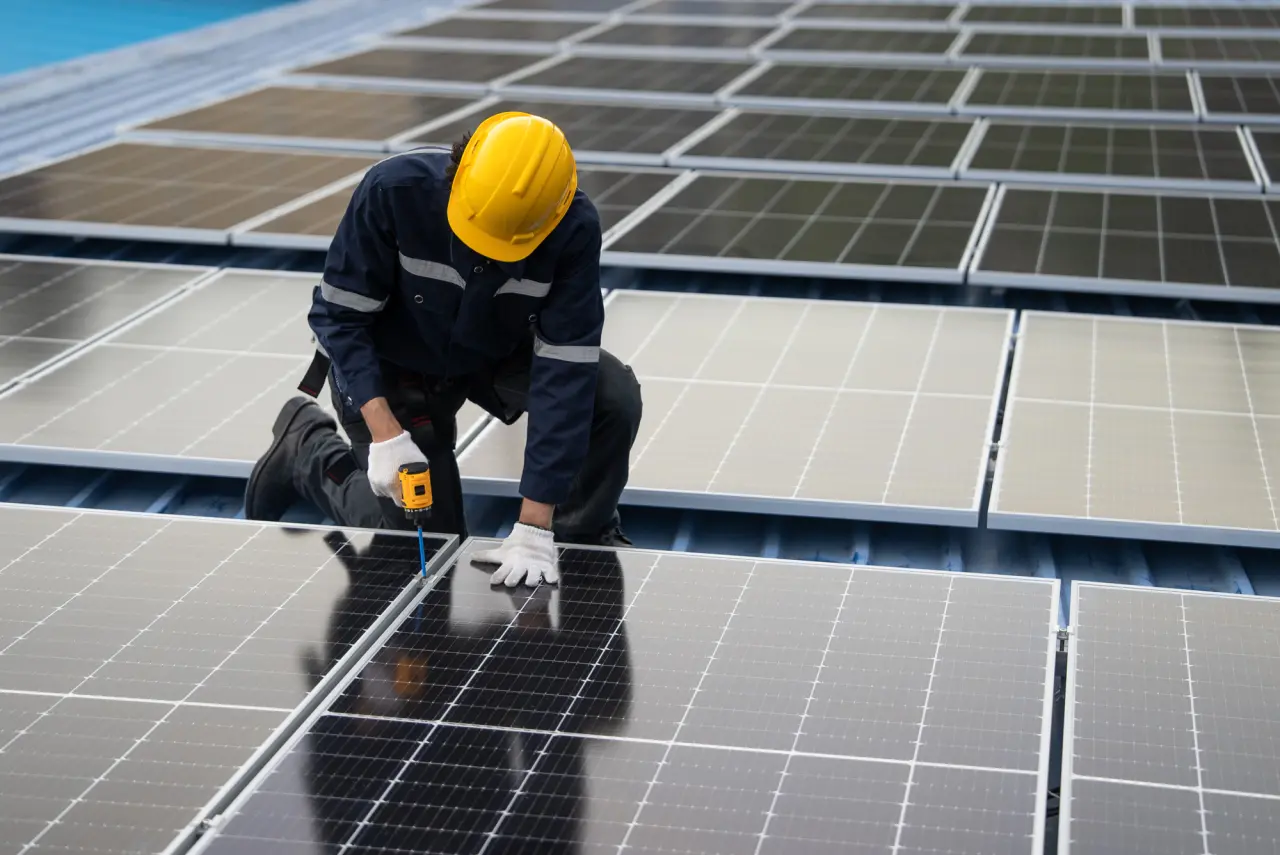Essential solar panel maintenance for peak performance


One of the main advantages of solar photovoltaic (PV) panel systems is that they can produce energy for 20 to 30 years with minimal maintenance. The panels have no mechanical parts, so components won’t wear down, need lubrication or require replacement.
Solar panels are easy to own, but you need to do some maintenance. For instance, dirty panels can reduce energy output by as much as 30%. Regular cleaning and system testing can ensure you are getting the most out of your solar PV investment. These efforts are even more important because energy-producing cells in the panels degrade slightly over time. Proper maintenance can help maximize output despite this gradual degradation.
Here are the steps you need to take to maintain your solar panels and ensure maximum energy output throughout their lifespan.
Do solar panels need cleaning?
Yes, solar panels need cleaning because they get dirty. One of the biggest problems with solar panels is that they can get dirty, particularly depending on how and where the panels are installed. Once the PV system's glass is covered with dust, leaves, dirt, or debris, less solar radiation can get through to the cells to produce energy.
As we already pointed out, dirty panels can reduce output by as much as 30%. However, the loss of energy can vary by location. In desert environments, dust can accumulate on panels because no rainfall can wash it away.
The issue is not as much of a problem in the U.S. or Europe, but dirt, dust, and fine particles from urban pollution can still settle on solar panels and limit their energy output.
Most solar panel owners need to clean their system once or twice per year, depending on the local conditions.
DIY cleaning techniques
It's sometimes possible to clean your panels yourself if you can safely access the system on the ground or roof. The job may require safety equipment like a harness if you need to stand on a rooftop. You will also need brushes or a cloth, soap, a hose and nozzle, and a separate towel or squeegee for drying.
If you can clean the panels yourself safely, follow this process:
- Turn off the system and avoid touching the underside of the panels.
- Use a nonabrasive brush to remove large debris, visible dirt, and bird droppings.
- Spray water from a garden hose to rinse the panel surfaces.
- Use a mild soap to clean problem areas with dried-on dirt or bird droppings. Make sure you rinse the soapy areas to avoid residue buildup.
- Use a brush or squeegee to dry each panel.
- When finished, turn the system back on.
In some cases, you may be able to use a dry cleaning method with a cloth or sponge to remove dust. This approach can be easier, but it won’t remove dirt or droppings stuck on the glass.
When to call a professional cleaner
Professional cleaning services are also an option. These pros can be a good option if you don’t feel comfortable climbing two or three stories above the ground or if you need to clean a significant amount of dirt or debris.
Seek a cleaning company that is experienced in the local area because they will have the expertise to deal with any issues they might encounter. Also, you want to work only with companies that have the correct insurance and permits for your area.

Monitoring system performance
You can spot problems early by monitoring your system performance with software that measures the amount of power flowing through the inverter. The inverter is the device that turns direct currents (DC) into alternating currents (AC) for use in your building.
Each panel should produce electricity within a specific kilowatt range. If the readings are lower than this range, it could be a sign of a problem, such as dirty panels, damage, or wiring issues.
Utilizing monitoring software
The software gets data from the inverter and sends it to your chosen device. You can see the current output in kilowatts (kW) and daily, weekly, or monthly outputs in kilowatt-hours (kWh).
Many software tools use algorithms or AI to provide performance metrics, such as system efficiency (in percentage). You can set alerts when these variables go outside of your preferred range.
Finally, the software can send alerts when it detects problems with the panels, wiring, or inverter.
Visual inspections: Catching problems early
Some PV issues are visible, and you can spot the need for maintenance with a visual inspection. Here is what to look for.
- Dirt or bird droppings on glass;
- Cracks or gaps;
- Water or condensation inside the casing;
- Dark coloring from burns or overheating;
- Evidence of frayed wiring.
As with cleaning, you’ll want to turn off the panel system before the inspection to ensure safety.
Professional maintenance: When and why
You may need professional help with issues with the wiring, inverter, or panel mountings. These problems require expertise and are beyond the abilities of most homeowners.
Recommendations for professional inspections and maintenance vary, with some experts suggesting annual inspections and others saying you can go three to five years between checks.
These inspections can find problems that you may not see but that could reduce the efficiency or lifespan of your panels.
Seasonal considerations for solar system maintenance
Different weather conditions can affect solar panel performance. Because of this, you need to look for specific issues and take certain maintenance steps during each season.
- Winter: check for ice buildup on panels. With proper orientation, snow should slide off the surfaces, but ice can reduce output.
- Spring: check for damage to wiring, panels, or the roof due to the previous season.
- Summer: monitor panel temperature. High temperatures can lower output. Check connections, which could become corroded in humid conditions.
- Autumn: clean the panels to remove fallen leaves and dust from the summer.
These steps vary depending on the local climate.
Preparing for extreme weather
Solar power can be useful after severe weather because it provides reliable energy even if the grid is down. However, you need to protect your system so it is ready for use when needed.
Inspections can ensure bolts and connections are secure. Also, proper orientation can reduce the impact of wind and allow rain to run off the panels without puddling.
After the storm, you can visually inspect panel frames, glass, roof, connections, and wiring for damage.
Extending solar panel lifespan through proper care
Solar panels can last for 20 to 30 years or longer with proper maintenance. After you pass the payback period, which is the amount of time it takes to reach the energy savings to pay off the installation and hardware costs for your PV system, you receive free energy for as long as your panels continue to perform.
The longer the panels last, the more profitable your solar investment. Also, in some areas, solar panels can increase home value, so a well-maintained system can help build home equity.
Proper cleaning, inspection, and maintenance can extend the life of your panels and maximize performance. It’s important to manage maintenance to get the most out of your panels for the next 20 to 30 years.
The big picture of solar panel longevity
Ultimately, maximizing the performance and longevity of your solar array is about more than saving money. You’re also playing a key role in humanity’s efforts to stop climate change. The Paris Agreement aims to keep the global average temperature increase below 2 degrees Celsius by 2050. This is because a temperature increase beyond this mark will be catastrophic for Earth and its inhabitants.
Minimizing carbon emissions is a huge part of this effort, but traditional power plants largely rely on fossil fuels to produce electricity, which releases harmful carbon into the atmosphere. By keeping your solar panels running properly long-term, you minimize or even eliminate your own fossil fuel power usage as humanity approaches 2050. This means it’s essential to do what you can to maintain your solar panels for as long as possible. You’ll help reach that crucial goal of reducing long-term climate change — even as you save money on power in the process.